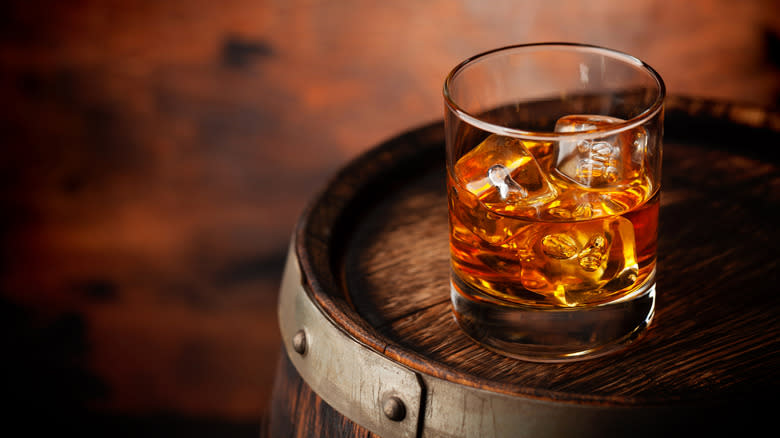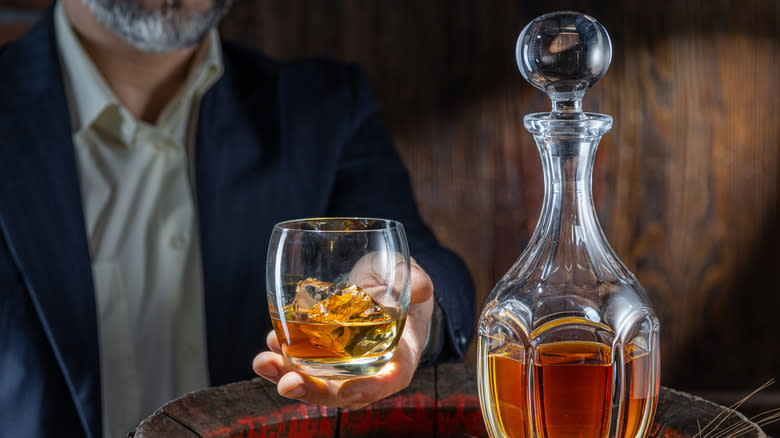The Only Sugar Content You'll Find When Drinking A True Bourbon

When you ask folks what bourbon tastes like, you'll get all sorts of answers ... such is the complex flavor of this liquor. But two flavor notes in particular will pop up in every person's characterization of this liquor: sweetness and spiciness. While it might make sense to attribute the spiciness to the alcohol, pinpointing where the sweetness comes from is a bit more tricky. The simple explanation that it comes from added sugar doesn't work because bourbon, by law, cannot contain any sugar.
True bourbon whiskey, as defined by the U.S. Code of Federal Regulations, is not allowed to have any "coloring, flavoring, blending materials," including artificial sugar. This distinguishes it from other types of whiskey, where distillers can add sweeteners to improve the taste. It's also why a standard 1.5 oz serving of whiskey, including bourbon, shows zero grams of sugar on the USDA's FoodData Central database.
So, where does that subtle sweetness, which emerges after the initial alcohol heat fades on your palate, come from? The answer lies in what contributes significantly to bourbon's enticing flavors: the virgin oak barrel! As bourbon ages in the barrel, it absorbs subtle flavors from the wood, including a small amount of wood sugar. Per the Scientific Reports journal, this sugar is exposed during the charring process of the oak barrel, where the heat alters the wood's microscopic structure. When the newly distilled whiskey is poured in, this sugar dissolves into the spirit, adding a faint sweet note.
Read more: The 27 Best Bourbon Brands, Ranked
So Where Does The Sweet In Sweet Bourbons Come From?

In addition to straight bourbons, you may come across varieties labeled as "sweet bourbons" that tend to have a slightly more saccharine taste than usual. However, it's important to note that even with sweet bourbons, distillers must follow a crucial rule: they cannot add any artificial flavoring.
Distillers have a few tricks up their sleeves to make these bourbons sweeter. One common method involves changing how they make the mash, which is the mix of grains, water, and yeast used in bourbon-making. Most bourbons use something called a "sour mash." They add some of the previous batch's mash into the initial mash, known as "sour mash" or "backset." This helps kickstart fermentation and also makes the mixture more acidic, which gets rid of any bacteria. The latter is the reason why sour mash is the traditional way straight bourbon is made: it's cheap and safe.
On the other hand, many bourbon brands now go for a "sweet mash." The production mash simply has grains, pure water, and yeast, without the addition of a backset. This cuts the acidity, allowing the fruity and flowery flavors of the bourbon, along with the sweetness from the oak and grains, to stand out more, hence the sweeter taste. Sweet bourbon makers have other methods at their disposal, but the rule remains the same: the sweetness should come from the distillation process itself, no artificial sugar allowed.
Read the original article on Tasting Table.

